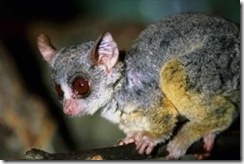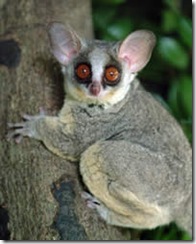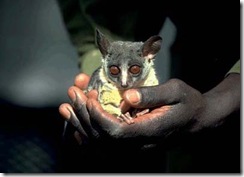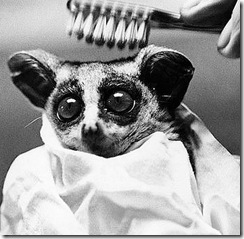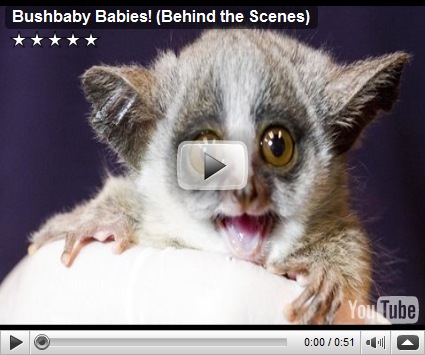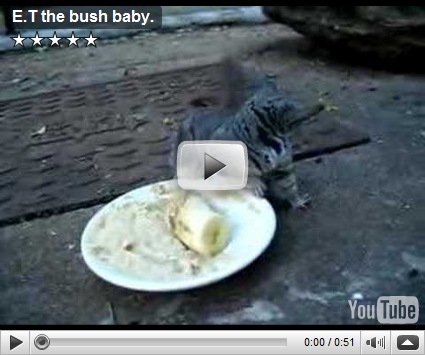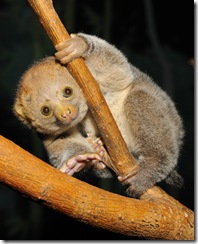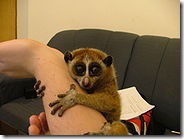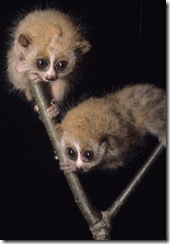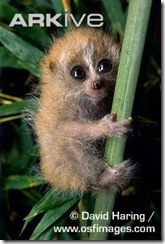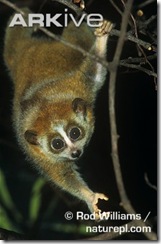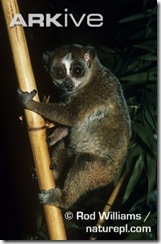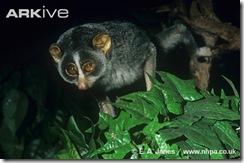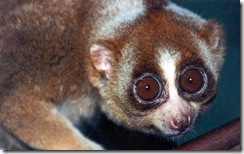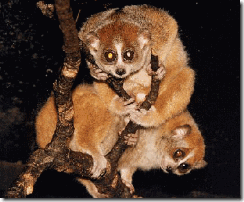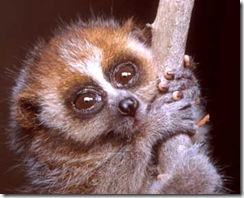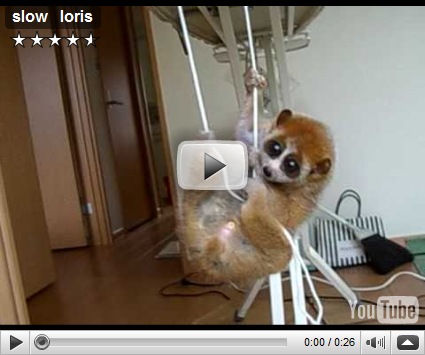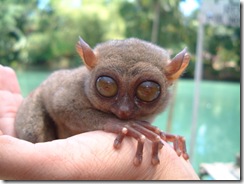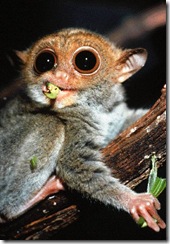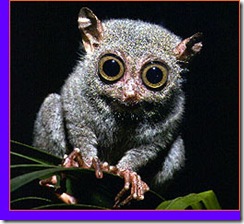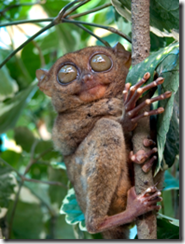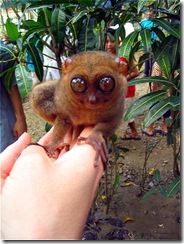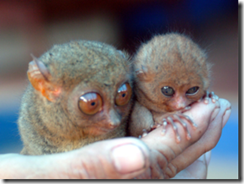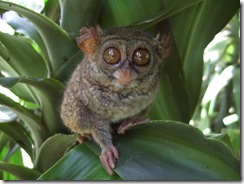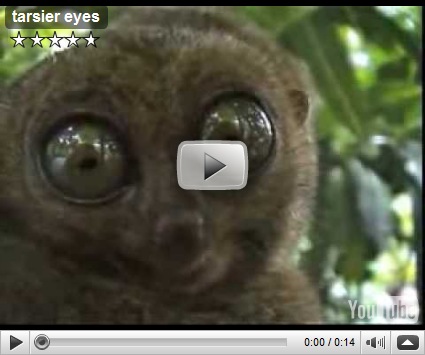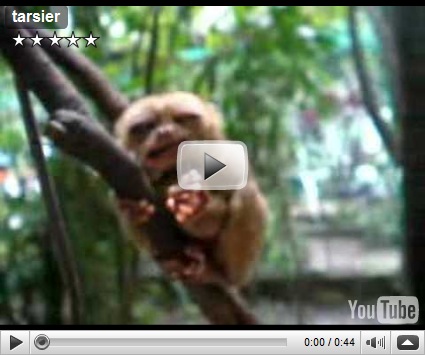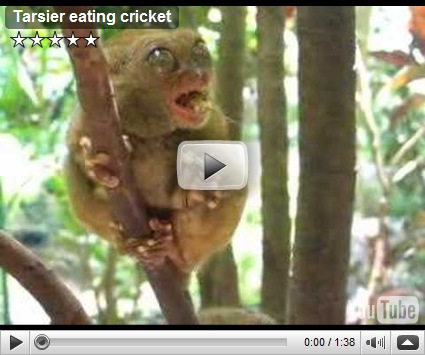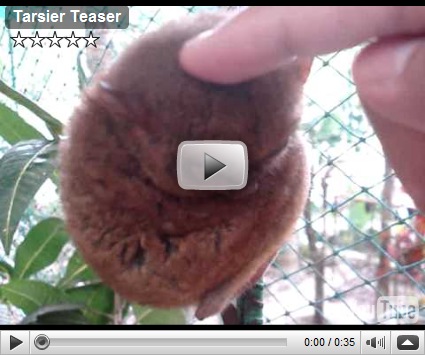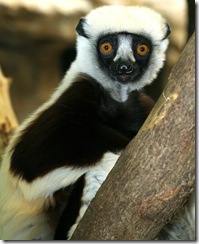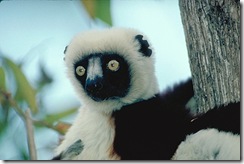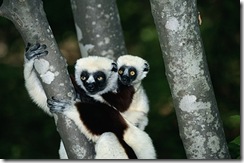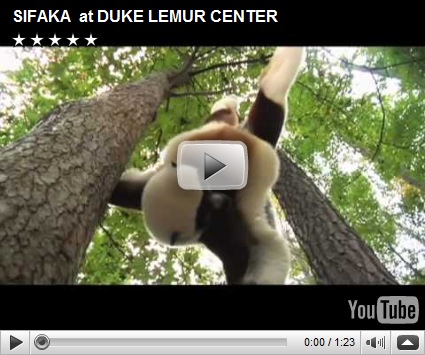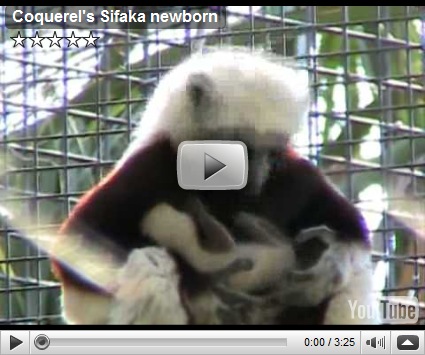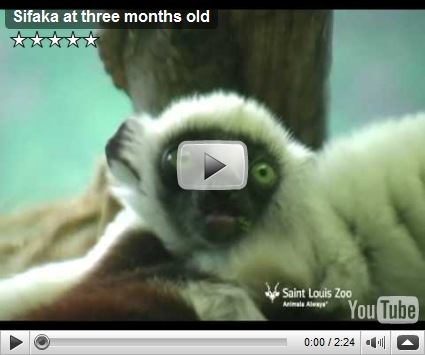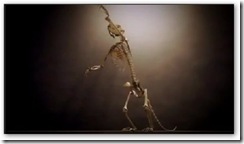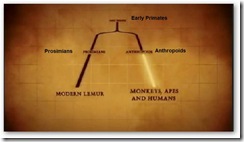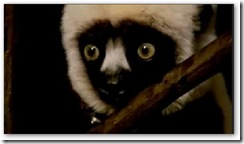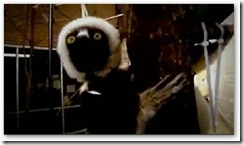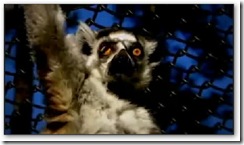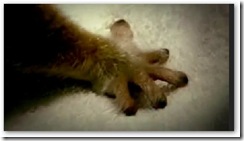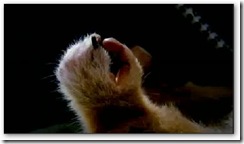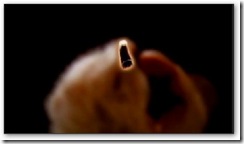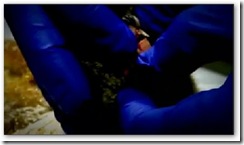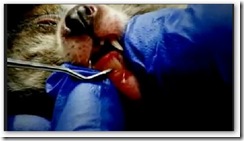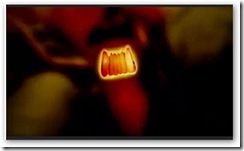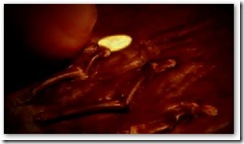寫完 Coquerel Sifakas (Lemurs), Tarsiers & Lorises 後, 心思思想睇吓另兩種類 Potto & Galagos 是什麼樣子的, 於是由上網找資料了.
Bushbaby (Galagos) :
Hahahahhhhhhhhhh!!!!! just 攪吓笑吧了.... 哈哈哈!!!
bush baby name for several small, active nocturnal primates of the loris family, found in forested parts of Africa. Bush babies, also called galagos, form the subfamily Galaginae. The smallest are about 1 ft (30 cm) long, including the long, furry tail. All have fluffy fur, small pointed faces with large eyes, and naked, highly mobile ears. The very large eyes are adapted for nocturnal vision and their pupils contract so as to be almost invisible. The long hind legs are specialized for jumping; the fingers and toes are long and slender, with fleshy terminal pads; and the thumb and big toe are opposable. Extremely swift and agile, bush babies leap like squirrels from branch to branch and hop on their hind legs on the ground. They feed on gums, insects, fruit, and vegetable matter. Senegal bush babies ( Galago senegalensis ) are familiar as pets. They are gregarious and spend much time grooming each other with their front teeth. Bush babies are classified in the phylum Chordata , subphylum Vertebrata, class Mammalia, order Primates, family Lorisidae.
Potto :
Perodicticus Potto
The potto is a mammal of the primate order and the prosimian suborder.Physical Characteristics
The potto is 12 to 16 inches with a 1 1/2 to 6 inch tail. It weighs 1 3/4 to 3 /14 pounds. Its joints are very mobile and allow it to reach out at any angle to grasp branches. It has fur that may be gray, brown, or red. Its ears and eyes are small. Its body is slender and long.
Behavioral Characteristics
The potto is nocturnal, sleeping during the day. It is arboreal, living among the trees and is a careful but skilled climber. In order to escape the attention of predators, the potto has the ability to stay completely still for hours. If it is attacked, it tucks its head down and batters its attacker with a "shield" of horny skin that covers the spiny bones on the potto's upper back. Its slow movements, coloration, small size, use of little vocalization and the its nocturnal habits all also help protect the potto from predation.
Life Cycle
The potto's breeding season is yearlong; however, it usually occurs at such a time that the births will take place when fruit is most bountiful. Also, the breeding only occurs once per year. The gestation or pregnancy of the female potto lasts around 200 days. The one young suckles the mother's teats for 120 to 180 days or 4 to 5 months. The young potto becomes independent between 6 and 8 months. Both males and females become sexually mature at about 18 months old. The maximum lifespan of the potto is over 25 years.
Diet
The potto's diet consists of fruits, sap, gum and small animals. They eat more fruit then anything else in their diet. Species that have a fruit diet
consists of fruits, sap, gum and small animals. They eat more fruit then anything else in their diet. Species that have a fruit diet are often referred to as being frugivorous.
are often referred to as being frugivorous.
The potto is sometimes part of the diet of the African palm civet. However the African palm civet, like the potto is usually mostly frugivorous.
of the African palm civet. However the African palm civet, like the potto is usually mostly frugivorous.
Habitat
The potto is located in western and central Africa. It lives in habitats of thick rainforest. It requires trees in order to survive.
The end.








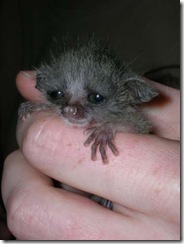
![3798_file_bushbaby_balfour[1]-730248 3798_file_bushbaby_balfour[1]-730248](http://lh6.ggpht.com/_2rFifoyjJng/SoVJFsOaZ0I/AAAAAAAAKP8/gRbkWAVJDeM/3798_file_bushbaby_balfour%5B1%5D-730248_thumb.jpg?imgmax=800)
